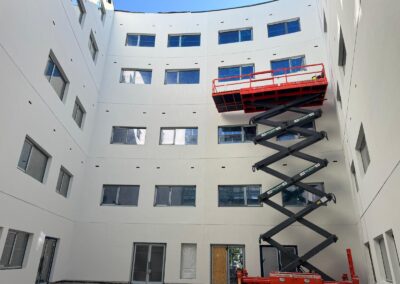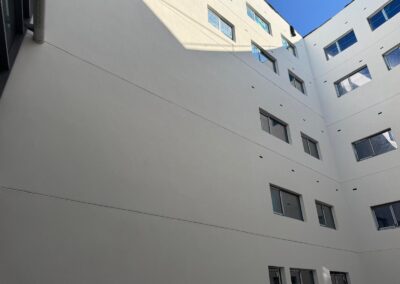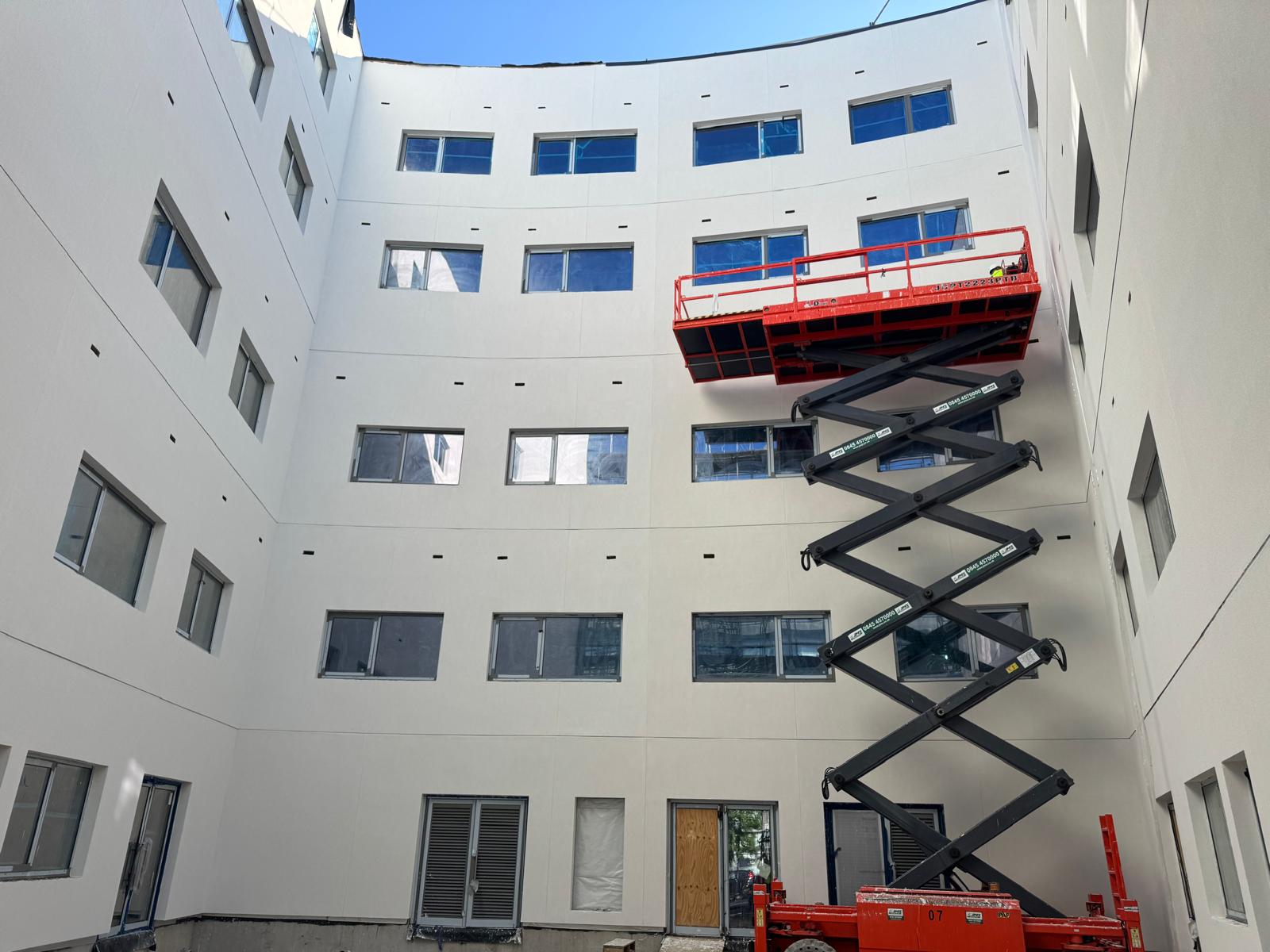INCA Case Study: Aviator Park Conversion
Aviator Park Conversion
Project Type: Refurbishment
Building Type: High Rise, Residential
Architect: N/A
System Designer: EWI Pro Insulation Systems
Installer: E&D Facades Ltd
System & Finish: EWI Pro Mineral Wool & Silicone Render
U-Value Before: 1.80 W/m²K
U-Value After: 0.21 W/m²K
Precision and Innovation: E&D Facades’ Challenging Install at Aviator Park
The transformation of an office block into residential flats at Aviator Park presented a formidable test of technical skill and precision for E&D Facades. The project involved the installation of a high-performance 150mm Rockwool external wall insulation system finished with a Silicone Render—designed to meet both stringent thermal targets and demanding architectural specifications. However, what set this project apart was the requirement for the building’s external façade to follow a precise 5.4-degree curve, presenting unique challenges at every stage of the build.
The substrate of the building was a steel frame system, meaning that careful detailing and fixing methodology were essential. Unlike traditional masonry, SFS substrates require absolute accuracy in bracket placement, fixings, and system alignment to avoid movement issues or thermal bridging. With a thick insulation layer of 150mm Rockwool specified for its superior fire performance, acoustic insulation, and breathability, the project demanded not just routine installation, but an innovative, precision-engineered approach.
Working in close coordination with EWI Pro’s technical team, E&D Facades developed a bespoke method for maintaining the exact 5.4-degree curvature across the entire façade. Traditional rigid board installation techniques were not feasible, so operatives had to work hard to achieve consistent curvature without compromising thermal continuity or structural integrity. Each insulation board was installed, bevelled, and shaped to fit into its curved segment without leaving voids or creating pressure points.
The silicone render finish added another layer of complexity. Silicone renders, while flexible and weather-resistant, require a flawless base and even application to ensure long-term durability and visual consistency—especially on curved surfaces. E&D Facades’ experienced applicators employed techniques to ensure the render followed the curvature seamlessly, with no cracking or textural distortion.
In addition to the technical execution, health and safety remained paramount throughout the project. Working at height comes with its own challenges but E&D Facades maintained rigorous site controls, minimising disruption while achieving an exceptional standard of external finish.
This project also reflects a broader and increasingly urgent trend: the conversion of underused office buildings into much-needed residential housing. With changing work patterns, many office spaces have become obsolete or under-occupied. Repurposing them into energy-efficient homes not only addresses the national housing shortage but also supports sustainable urban regeneration by reducing the need for new land development.
By breathing new life into an existing structure, the Aviator Park conversion preserved embodied carbon, minimised demolition waste, and revitalised a previously underutilised asset. The integration of a modern EWI system significantly upgraded the building’s thermal performance, aligning it with current environmental standards and supporting long-term energy savings for future residents. Projects like this highlight how thoughtful retrofitting and insulation can turn outdated commercial spaces into high-quality, low-carbon homes.
The completed façade now stands as a bold and contemporary visual marker at Aviator Park—one that demonstrates how external wall insulation systems can be adapted to even the most geometrically challenging structures. The 5.4-degree curve, once a daunting specification, has become a hallmark of E&D Facades’ craftsmanship and problem-solving expertise.
This project exemplifies what can be achieved when innovation, technical knowledge, and on-site excellence come together.
This project exemplifies what can be achieved when innovation, technical knowledge, and on-site excellence come together.





